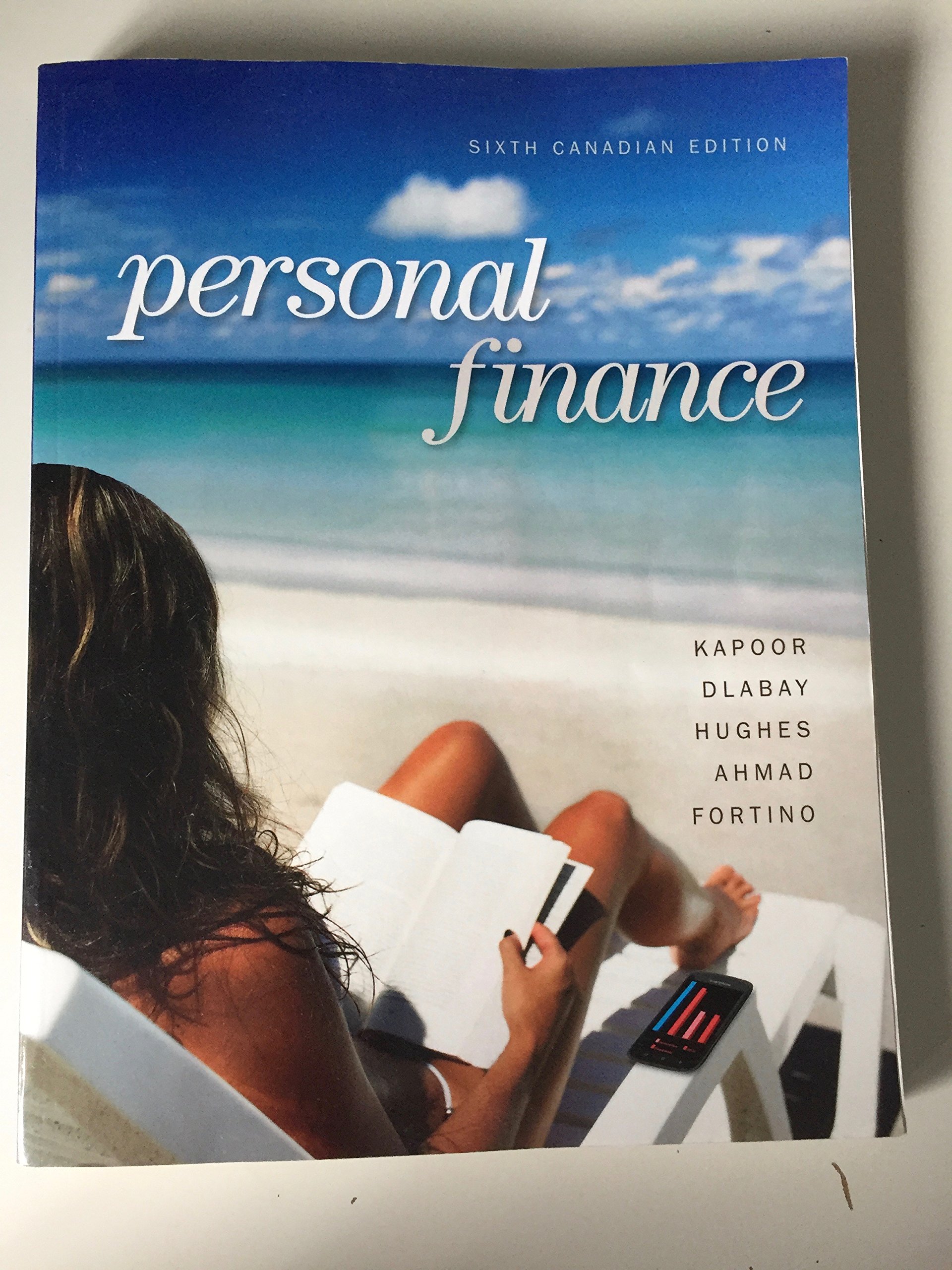Personal Finance 6th Canadian Edition by Kapoor – Test Bank
Digital item No Waiting Time Instant DownloadISBN-10: 1259453146 ISBN-13: 978-1259453144Publisher : McGraw-Hill RyersonAuthor: Jack KapoorEdition: 6th
In Stock
Original price was: $55.00.$35.00Current price is: $35.00.
Personal Finance 6th Canadian Edition by Kapoor – Test Bank
Personal Finance – 6th Canadian Edition by Kapoor – Test Bank
Overview
“Personal Finance” by Jack Kapoor, Les Dlabay, Robert J. Hughes, and others is a comprehensive textbook widely used in personal finance courses across Canada. The 6th Canadian Edition is tailored to meet the needs of Canadian students, incorporating local financial regulations, market conditions, and examples. The accompanying test bank is an essential tool for both educators and students, designed to assess and reinforce the understanding of key personal finance concepts covered in the textbook.
Key Features of the Test Bank
- Comprehensive Coverage:
- The test bank includes a diverse range of questions that cover all chapters of the textbook.
- Questions are designed to test students’ knowledge, comprehension, application, and analysis of personal finance topics.
- Variety of Question Types:
- Multiple-Choice Questions: Assess fundamental concepts and factual knowledge.
- True/False Questions: Evaluate understanding of key principles and statements.
- Short Answer Questions: Require students to explain concepts and provide detailed answers.
- Essay Questions: Encourage critical thinking and in-depth analysis of complex financial topics.
- Alignment with Learning Objectives:
- Each question in the test bank is aligned with specific learning objectives outlined in the textbook.
- This ensures that assessments are directly relevant to the material covered and the intended learning outcomes.
- Detailed Rationales:
- Explanations are provided for each question, detailing why a particular answer is correct or incorrect.
- These rationales help students understand the underlying concepts and learn from their mistakes.
- Difficulty Levels:
- Questions are categorized by difficulty level, allowing instructors to tailor assessments to the appropriate level of challenge for their students.
- This helps in creating balanced tests that can effectively gauge student understanding.
- Current and Relevant Content:
- The test bank is updated to reflect the latest developments and trends in personal finance.
- Canadian examples and case studies ensure that the content is relevant to students in Canada.
Structure and Content
The test bank is structured to align with the chapters of the textbook, covering major topics such as:
- Introduction to Personal Finance:
- Understanding personal finance and its importance.
- Setting financial goals and creating personal financial plans.
- Managing Personal Finances:
- Budgeting and cash flow management.
- Using financial services and understanding banking.
- Credit Management:
- Types of credit and loans.
- Managing credit and dealing with credit issues.
- Insurance and Risk Management:
- Types of insurance (health, life, auto, home, etc.).
- Assessing insurance needs and choosing appropriate coverage.
- Investing Fundamentals:
- Understanding different types of investments (stocks, bonds, mutual funds, etc.).
- Developing investment strategies and managing an investment portfolio.
- Retirement and Estate Planning:
- Planning for retirement and understanding retirement accounts.
- Estate planning and the importance of wills and trusts.
- Tax Planning:
- Understanding the Canadian tax system.
- Strategies for tax planning and tax-efficient investing.
- Financial Planning for Life Events:
- Managing finances for major life events (buying a home, marriage, education, etc.).
- Financial considerations for different stages of life.
Benefits for Educators and Students
For Educators:
- The test bank is a valuable tool for creating reliable and valid assessments that measure student learning effectively.
- It saves time in test preparation, allowing instructors to focus more on teaching and student interaction.
- The variety of question types and difficulty levels helps in assessing a wide range of competencies and skills.
For Students:
- Practicing with test bank questions helps students identify areas where they need further study and improvement.
- Exposure to a variety of question types prepares students for the kinds of questions they will encounter on exams.
- Detailed rationales enhance learning by providing explanations and reinforcing key concepts.
How to Access the Test Bank
The test bank for “Personal Finance – 6th Canadian Edition” is typically available through the publisher’s website or through educational resource platforms. Instructors often receive access codes or permissions to use the test bank as part of their course materials. It is often available in digital format for easy integration with learning management systems (LMS).
Conclusion
The test bank for “Personal Finance – 6th Canadian Edition” by Kapoor et al. is an indispensable resource for both educators and students. It supports effective teaching and learning by providing a comprehensive, relevant, and versatile set of assessment tools. By aligning closely with the textbook content and learning objectives, the test bank ensures that students are well-prepared to master the essential concepts and skills required for personal financial management.


Reviews
There are no reviews yet.